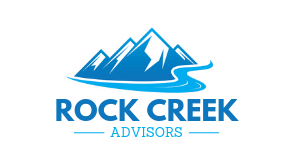- July 6, 2020
- Posted by: James Gansman
- Category: News
Source: Bloomberg
“The bankruptcy trend is just up,” said Jim Hammond, chief executive officer of New Generation Research Inc., which owns bankruptcydata.com. “The money is going to run out.”
The recipients that went bankrupt didn’t do anything improper. Federal regulations bar companies from receiving PPP money while they are in bankruptcy — but not the other way around.
TooJay’s Management LLC and HopCat parent company Barfly Ventures LLC, which both filed within five weeks of getting federal assistance, are seeking to use the cash to keep operating while they reduce debt and prepare for a fresh start once their court cases end. For them, the low-interest PPP loan is a cheaper way to finance a turnaround than in traditional bankruptcy cases, where lenders routinely charge double-digit interest rates and impose hefty fees.
There appears to be no guideline preventing a borrower from heading to the courthouse shortly after getting PPP funds, said Edward Barry, chief executive officer of Capital Bank NA, a Rockville, Maryland-based lender that has made $234 million of PPP loans.
“It’s free money if you work within the program,” Barry said.
The companies got a much larger PPP loan than the average, which was $108,000 as of June 27. Only 0.1% of all PPP loan recipients got more than $5 million, according to the Small Business Administration, which oversees the program. Barfly founder Mark A. Sellers III didn’t return calls seeking comment. A Barfly attorney declined to comment. An attorney for TooJay’s didn’t respond to an email message. The SBA declined to comment.
The primary goal of the $669 billion PPP program, which stopped taking applications June 30, was to keep small firms that were otherwise financially healthy afloat during forced lockdowns. The U.S. Senate voted Tuesday to extend the program to Aug. 8. The House of Representatives hadn’t taken up the extension as of Wednesday morning.
TooJay’s said in court papers it was profitable until it had to shut its locations. Barfly had been struggling before the coronavirus, having expanded too rapidly while chasing what it called the craft beer craze, according to papers filed in its Chapter 11 case.
Barfly’s loan, at $6.6 million, is the biggest among at least 48 cases filed since the PPP launched early April, according to Ben Schlafman, chief operating officer at New Generation, who searched the bankruptcy database for references to the federal program. TooJay’s got $6.4 million. Among other large PPP loans is $4.3 million to Las Vegas solar roofing company Petersen-Dean Inc. A lawyer for the company didn’t return a call seeking comment.
Sellers, an alumni of the former Wall Street titan GE Capital, opened the craft-beer chain HopCat in 2008 in his hometown of Grand Rapids, Michigan. The company grew into a local empire that today includes 17 HopCat restaurants in Michigan, Wisconsin, Indiana and Kentucky, as well as a brewery in Grand Rapids.
Before the pandemic, Sellers, who owns 28% of Barfly, tried to turn around the enterprise, closing two underperforming restaurants in Florida and Missouri, cutting costs and using online ordering services, according to the filing. For at least one of his lenders, Main Street Capital Corp., that wasn’t enough. Barfly owes the bank about $10.2 million, but the value of the loan had fallen to $1.1 million at the end of March, according to a Main Street regulatory filing.
‘Craft Beer Craze’
Barfly “took on an overly aggressive expansion process by building new HopCat locations that were both too large and geographically diverse,” the company said in its filing. “The ‘craft beer craze’ has also slowed down, along with the uneven casual dining interest in a nationally struggling retail market.”
Restaurants, among the hardest hit during the pandemic, were allowed by law to apply for PPP assistance even when their total staff exceeded 500 — the SBA definition of a small business — as long as each physical location employed fewer than 500 employees.
Barfly furloughed all but 10 of its 1,145 employees during shelter-in-place orders, according to its June 3 filing. The PPP funds will be used to cover payroll costs and health-care benefits as the chain reopens gradually, the company said in the filing.
Unlike Barfly’s HopCat, the TooJay’s sandwich chain in Florida was financially sound before the shutdowns. Until social-distancing restrictions hit the 28-store company, Too-Jay’s was profitable and had plans to expand in Florida and the Southeast, Chief Executive Officer Edward Maxwell Piet said in court papers.
The company, which employed 1,114 workers in February, said in its April 29 filing that it anticipated that the lifting of business restrictions in coming months would rehabilitate its operations.
A PPP loan gives companies a clear advantage in bankruptcy. Interest rates on so-called debtor-in-possession loans are often more than 10% and give the lender strong collateral rights. By contrast, PPP loans carry an interest rate of 1% and turn into a grant if the money is used to pay employees or other approved expenses. The federal loans, which require no payments for six months, are also unsecured, which means taxpayers can’t collect anything until secured lenders are fully repaid.
A banker for Petersen-Dean, the bankrupt Las Vegas roofer, refused to disburse the company’s $4.3 million PPP loan, according to court papers. The reason? The lender wanted the debt to get a higher repayment status, just like a traditional bankruptcy loan.
(Updates with Senate extension of PPP deadline in the ninth paragraph.)
For more articles like this, please visit us at bloomberg.com
©2020 Bloomberg L.P.
